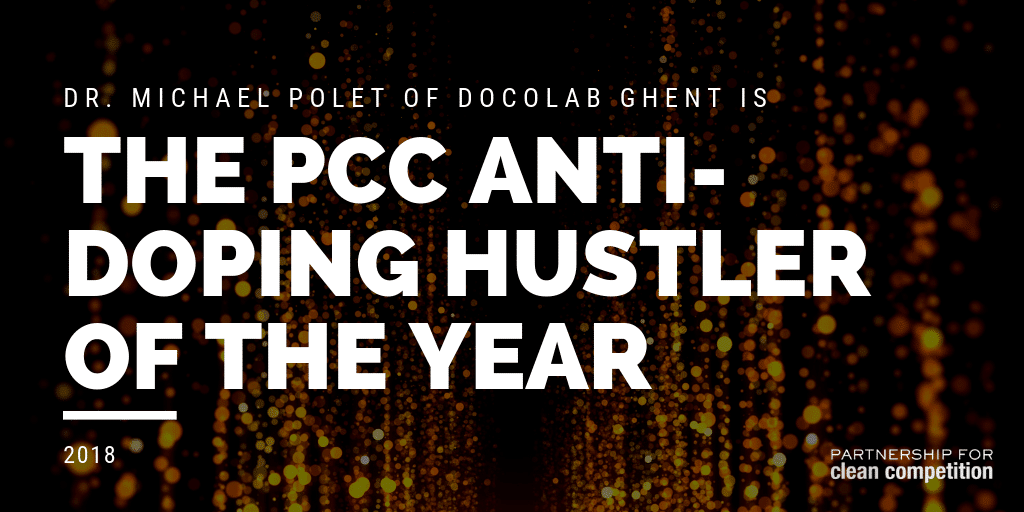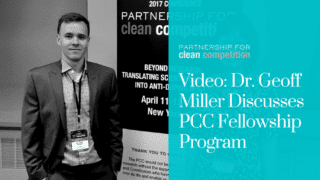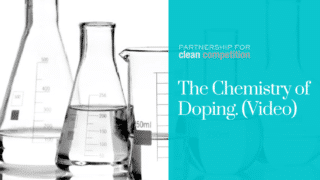2018 was an amazing year for PCC scientists: nearly $4 M USD was awarded, including four Fellowships to promising young PhDs, and products of PCC research were published and/or presented around the world by more than 20 PCC investigators.
But few PCC investigators were as busy as Dr. Michaël Polet, a two-time PCC awardee who is currently Head of the IRMS department at the WADA-Accredited DoCoLab Ghent where he has been fighting doping in sport since 2011.
Not only did Dr. Polet develop and validate an open screening method for doping substances in urine using chromatography quadrupole time-of-flight mass spectrometry (GC-QTOF-MS) – an achievement in itself – he and the team at U Ghent (which includes laboratory head Dr. Peter Van Eenoo and Dr. Wim Van Gansbeke) presented the research across five countries and four mediums in 2018, for a total of seven research outputs in less than a year.
For just one project.
That’s why Dr. Polet is the PCC Anti-Doping Hustler of the Year.
We wanted to learn more about the passion and experience behind the research, so we interviewed Dr. Polet about what led him to anti-doping, and innovations on the horizon he’s excited about:
Why did you decide to focus your scientific skills on anti-doping?
Anti-doping is a particularly challenging field due to its dynamic nature and the need for state-of-the-art methodologies. It requires exploiting analytical instruments such as liquid and gas-chromatography-mass-spectrometers to their full potential. Exploring and pushing the capabilities of these analytical instruments is extremely fascinating and provides answers for difficult anti-doping control related issues. Developing these innovative approaches is very rewarding and provides day-to-day challenges.
How did you end up at the DoCoLab in Belgium?
After I obtained my master’s degree in chemistry, I performed research at the Pfizer Analytical Research Center in Ghent under the supervision of Prof. P. Sandra. One year later in 2011, triggered by analytical methodologies based on chromatography and mass spectrometry, I started my Ph.D. at the Doping Control Laboratory. My work primarily focused on the development and validation of GC-C-IRMS methods and after attaining my Ph.D. I continued working at DoCoLab initiating various other doping-related research projects.
What’s an average day in an anti-doping lab?
A typical day involves tackling a wide range of responsibilities and tasks.
- Routine Testing. We must follow up on routine GC-C-IRMS doping control samples, and ensure our analytical methods are up-to-date and in compliance with WADA regulations.
- Research. Experiments are performed daily in the laboratory and at any one time various research projects need to be guided, papers written, and oral presentations prepared. At regular intervals, new projects and grant applications are developed.
- Equipment & Administration. Instrument troubleshooting and regular laboratory meetings are also part of life in an anti-doping laboratory.
What innovations are you currently working on?
I am currently involved in a number of various research projects. The most important ones are the switch from GC triple quadrupole MS screening to an equivalent open high-resolution acquisition GC-QTOF screening and our research on non-hydrolyzed sulfated steroids on GC-MS.
Why is your research important? What are the possible real-world applications?
In sports drug testing, state-of-the-art methodologies are used to maximize the chance of detecting doping abuse and provide high-quality analyses. Continuous research on various levels is necessary to ensure that doping-control laboratories can maintain and improve their capabilities. In addition, it is a field of research related to many other disciplines (e.g., forensics, toxicology, food analysis, clinical chemistry), meaning that many of the developments in doping control can be transferred to other disciplines.
What’s the most exciting discovery you’ve made in your career?
There is not a particular discovery that I would regard as the most important one. I would consider my work a chain of small discoveries followed by sequential improvements that, as a whole, lead to significant and innovative advances for the anti-doping community. For example, the development of the first open GCMS screening method on GC-QTOF allows doping control laboratories to switch from the current GC triple quadrupole MS screening methods to an equivalent open high-resolution acquisition screening method. Here, retrospective data analysis can be used to re-evaluate previously acquired data (e.g., searching for prohibited substances that were unknown at the initial moment of analysis), providing a powerful tool in the fight against doping and deterring athletes from doping abuse.
What projects are you looking forward to completing?
At this stage, we started exploring the potential of analyzing non-hydrolyzed sulfated steroids on GC-MS. It is an exciting approach that brings new opportunities and possibilities. In the long run, we aim at including sulfated metabolites of anabolic steroids in the GC-MS routine screening method. This will enable significantly longer detection windows for anabolic steroids.
What do you like most about working with the PCC?
PCC is an organization that primarily focusses on funding much-needed anti-doping research. They guarantee a fast and high-quality review of the submitted research project. The reviewers provide constructive feedback leading to significant improvements to the project. These experts have various scientific backgrounds, not necessarily directly related to doping, allowing alternative views that can open new windows and provide new ideas.
If you’d like to know more about Dr. Polet or any of the research in progress at the DoCoLab Ghent feel free to email Michael Pearlmutter at mpearlmutter@cleancompetition.org





